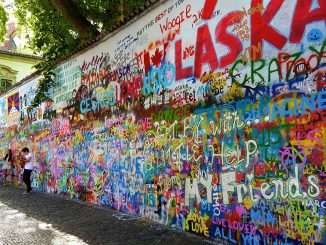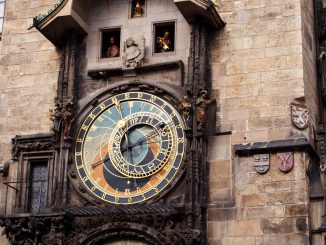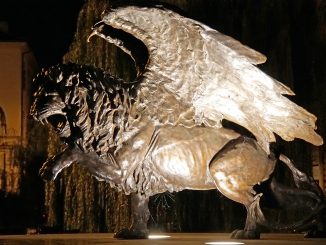
The Charles Bridge (Karlův most) is one of the places where pictures do no justice compared to standing there and taking in the breathtaking views. With historic and beautiful architecture on both sides of the bridge, and Prague Castle perfectly framed, it is here that you are at the center of the “City of a Hundred Spires”. A short walk from world famous Prague Astronomical Clock, the Charles Bridge is an historic bridge that crosses the Vltava river in Prague, Czech Republic.
Commissioned by King Charles IV, the foundation stone was laid in 1357. Peter Parler, the favorite architect of the King oversaw the majority of the work and was instrumental in the functional construction of the bridge for use in knight tournaments.
Originally known as the Stone Bridge of the Prague Bridge it is now known as one of the city’s finest attractions, and is the main pedestrian route connecting the Old Town Prague with Lesser Town, also known as Prague Castle. It has been widely known as the Charles Bridge since 1870. Construction started in 1357 but it remained incomplete till the early 1400s. Built to replace the Judith Bridge, built in 1172 that was damaged beyond repair by a flood in 1342. Since it was the only way to cross the Vltava until 1841, the Charles Bridge was the most important connection between Prague’s Old Town and the growing city.
The 621-meter long, 10-meter wide bow bridge has 16 arches protected by ice guards and is further safeguarded by three bridge towers, two of which are on the Lesser Quarter side and the third on the Old Town side. The simple elegant gothic bridge, originally decorated with a single crucifix is now considered to be one of the greatest examples of gothic-style engineering and is decorated with over 70 statues. The statues are mostly in the baroque-style and the 30 original statues lining the bridge were erected between 1683 and 1714 at the turn of the18th century. Depicting various saints, the most prominent Bohemian sculptors of the time were responsible for decorating the bridge. Starting in 1965, all of the original statues were moved to the National Museum and replaced with replicas.
Damage to the Bridge
Throughout its history, the Charles Bridge suffered several disasters and witnessed many historic events. A flood in 1432 damaged three of the pillars and in 1496 the third arch deteriorated because of harsh weather. The pillar was repaired in 1503.
In 1648 the Swedes occupied the west bank of the Vltana and tried to advance into Old Town Prague. Much of the heaviest fighting took place on the bridge and the river facing side of the Old Town tower was damaged. Because of the damage almost all of the gothic decorations had to be removed and they were replaced with the baroque style currently on the bridge. During a 1784 flood five of the pillars were severely damaged and bridge traffic was severely restricted.
In September of 1890, the Charles Bridge was again damaged by a flood when thousands of logs from upstream became dislodged and started to build up pressure against the side of the bridge. During this flood some of the statues, those of St. Ignatius of Loyola and St. Zavier fell into the river. The bridge was closed for restoration for 2 years and during this time the statues were replaced or repaired.
Charles Bridge Facts
- Charles Bridge Prague was originally built with a single ornament, a large cross made of wood.
- There are so many artists, musicians, dancers, and mimes on the bridge that they created the Association of Charles Bridge Artists in 1990.
- The Hotel Archibald near the bridge dates from the 1600’s and is the oldest in Prague.
- The Charles Bridge was preceded by two different bridges. The first was a wood bridge that collapsed in 1157, and the second was the stone Judith Bridge that collapsed in 1342.
- It was originally called the Stone Bridge. Since it was the only bridge in Prague there was no chance that it would be confused with any other bridge.
- Most of the statues that line the Charles Bridge are replicas.
- Cars, trucks, and trams were allowed on the bridge until 1965. Since then it has been only pedestrian traffic.
Travel Tips
- Take a few extra small bills to spend on the bridge since there are plenty of street artists and musicians playing for tips.
- Walk across the bridge and have a beer in Old Town Prague. There will be lots of locals dining in the cafes, and it is not uncommon to have a beer any time of day. You may even see older grandmotherly women having a large beer for breakfast with their ham and bread.
- Try taking a walk across the bridge in the early morning or early evening. Since beer is such a popular drink in the Czech Republic, the crowds will be a bit lighter in the morning and while you will likely not see any Dixie-land jazz bands at 8:00am, you will have beautiful uninterrupted views. If you’re not a morning person you can also try taking a stroll in the early evening since many tourists will be out finding something to eat or enjoying some live music.
- Find the statue of St. John of Nepomuk and rub it for good luck. The 8th statue of the right heading from Old Town Square towards Prague Castle will have a shiny, gold spot on the bottom where it has been rubbed by hundreds of thousands of visitors. John of Nepomuk was thrown from the bridge to his death in the Vltava below because he refused to tell the King what the he and the Queen had discussed in confession. Touching or rubbing the plaque of the statue is supposed to insure lifelong good luck and an eventual return to the beautiful city.


